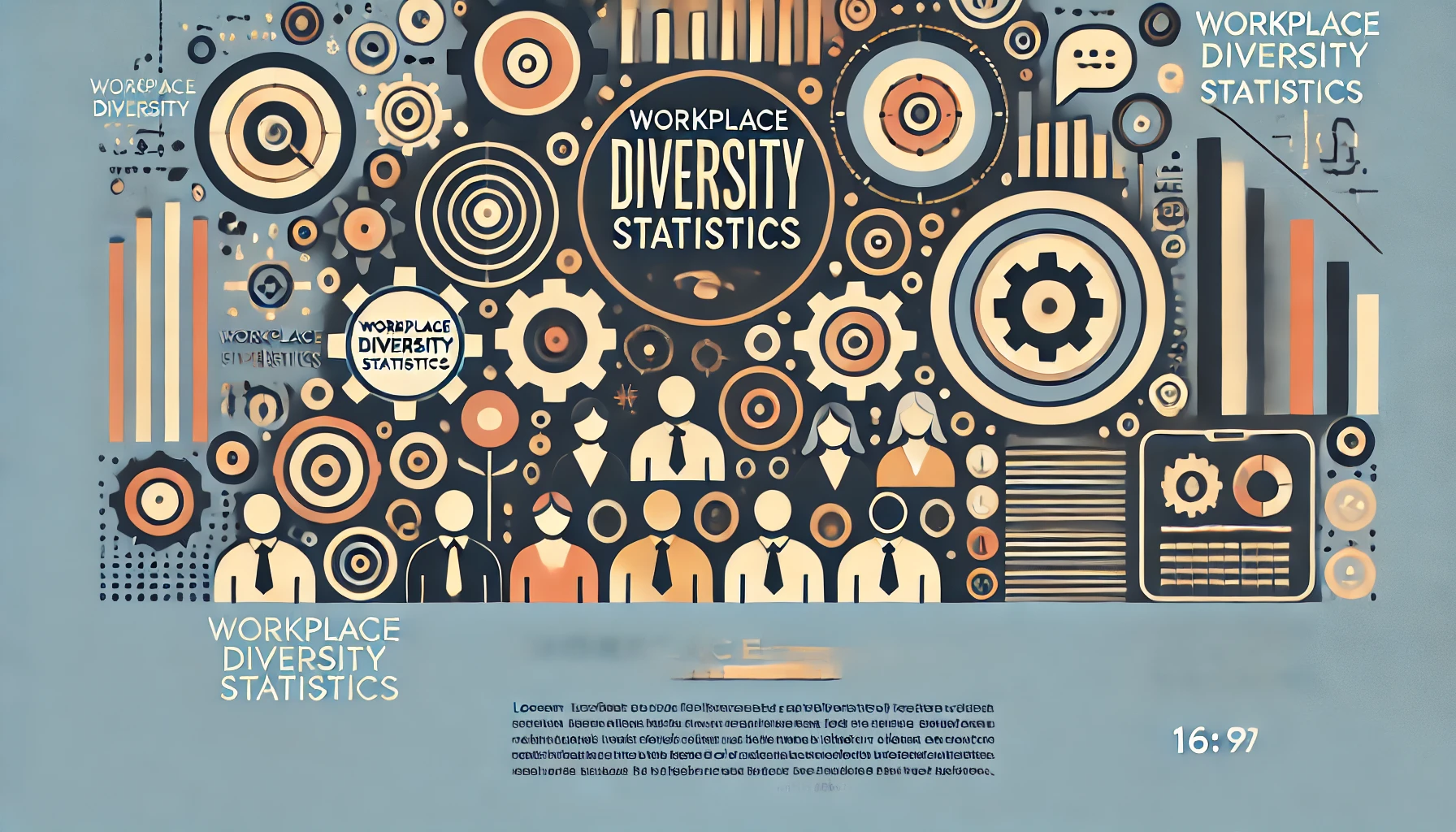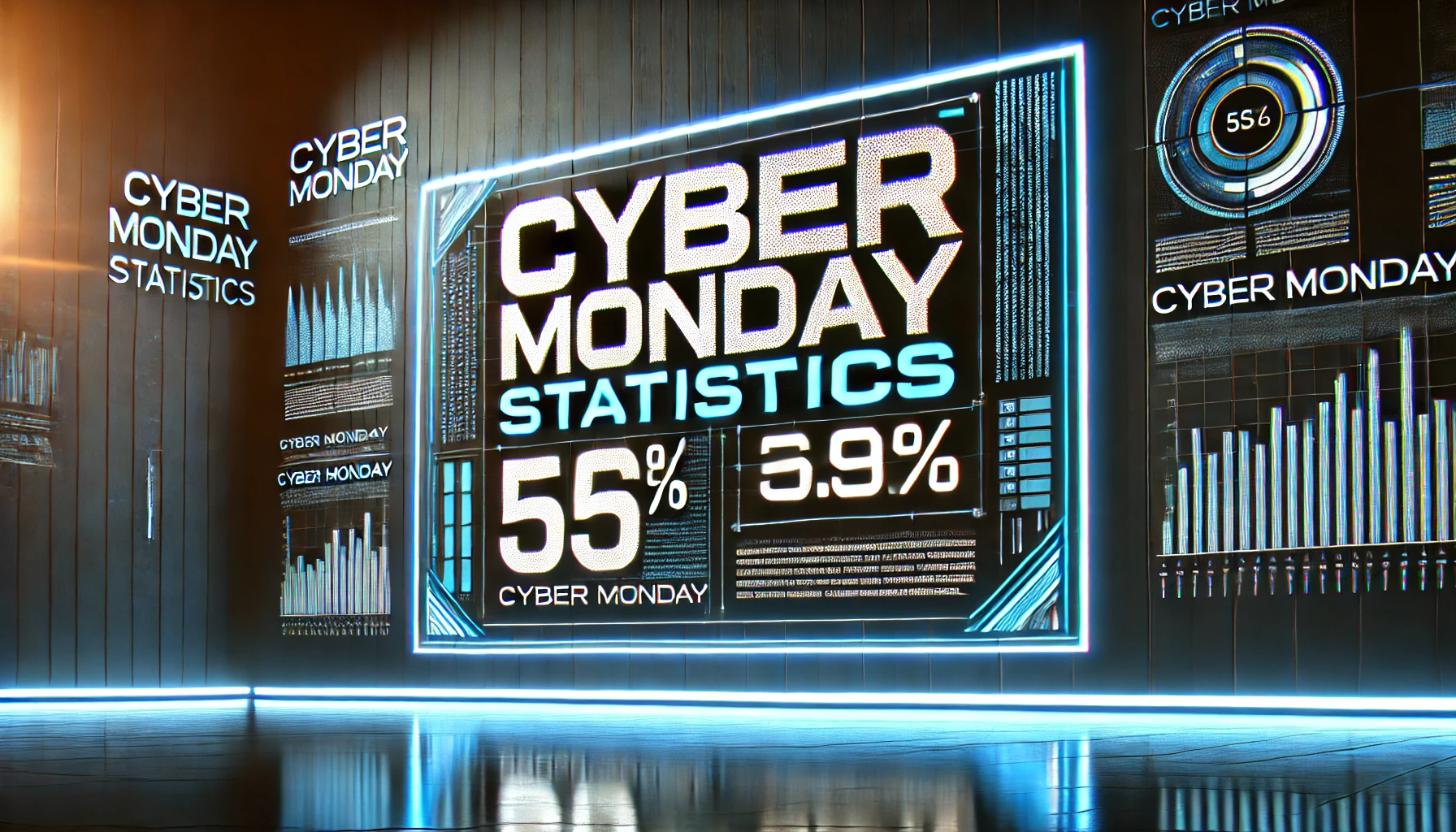Virtual Events Statistics By Impacts, Sponsorship, Virtual And Hybrid Events, Technology, B2B Industry, Platform And Features
Updated · Oct 08, 2024

WHAT WE HAVE ON THIS PAGE
- Introduction
- Editor’s Choice
- What is A Virtual Event?
- Different Types Of Virtual Events For 2024
- General Virtual Events Statistics
- In-Person Event Statistics
- Impact Of COVID-19 On Virtual Events Statistics
- Virtual Event Benchmarks, Issues, And Success Statistics
- Event Sponsorship Statistics
- Cost Saving And Attendee Engagement In Virtual Events Statistics
- Virtual And Hybrid Event Statistics
- Event Technology Statistics
- Adoption Rates of Virtual Events By Organizations
- Benefits Of Virtual Events Statistics
- B2B Event Industry Statistics
- Virtual Event Platform And Features Usage Statistics
- Webinar Statistics
- Conclusion
Introduction
Virtual Events Statistics: Since the COVID-19 pandemic began in 2020, virtual events have become a big part of our work and social lives. Even as we start to move on from the pandemic, it looks like virtual meetings, conferences, and other gatherings will continue to be important in the global events scene. Many people still feel uncomfortable in large crowds, and some cannot attend in-person events for health reasons.
Virtual events save time and money because there’s no need to travel to a location. They let us invite friends and colleagues from anywhere in the world. The need for virtual gatherings has pushed quick improvements in webinar technology. As everyone started meeting online, new tools and apps were created, making it easier and more enjoyable to host and attend virtual events successfully. We shall shed more light on Virtual Event Statistics through this article.
Editor’s Choice
- The global market for virtual events is expected to reach $1,066 billion by 2032.
- North America is the leader with a 38.4% share, thanks to its strong digital infrastructure and extensive use of virtual technologies.
- Microsoft Corporation has an 18% share of the market, benefiting from its wide range of collaboration tools, according to Virtual Event Statistics.
- A huge 99% of companies surveyed say webinars are an important part of their marketing strategy.
- In a survey of B2B marketers worldwide as of May 2020, 49% of respondents reported hosting 20 to 30 virtual events per year as the most common frequency.
- Live video streaming is widely used across different industries, especially by broadcasters and media companies, which account for 30% of its usage.
- While one-third of people find virtual events engaging, only 23% think virtual conferences are truly unique.
- The biggest challenges for virtual events are keeping the audience engaged and encouraging interaction.
- The main key performance indicator (KPI) tracked for virtual events is the engagement and satisfaction of the attendees.
- 74% of event marketers do not charge for attending virtual events.
- The industries that use webinars the most are Software & Tech (29%), Financial Services (14%), and Education (11%).
- 55% of people register for webinars in the last week before the event.
- Virtual Event Statistics stated that almost 44% of webinars have fewer than 25 participants.
What is A Virtual Event?
A virtual event, also known as an online event, virtual conference, or live stream experience, is when people connect and interact over the Internet instead of meeting in person.
Some common types of virtual events involve live streams, webinars, virtual tours, virtual trade shows, online classes, and company events. Recently, hybrid events have become popular, combining in-person gatherings with online parts that can be accessed virtually.
The term “virtual event” can also refer to events that take place in virtual reality (VR) or augmented reality (AR) settings.
Different Types Of Virtual Events For 2024
Virtual events cover many types of online gatherings, going beyond just webinars or Zoom meetings. Here are some popular types of virtual events to consider in 2024:
- Virtual Conferences: These online gatherings are like traditional conferences but happen on video platforms. Organizations such as businesses and schools can host them, allowing participants to join from anywhere with internet access.
- Virtual Summits: These interactive events last one or two days and bring together experts to discuss specific topics. They aim to create a community, share knowledge, and generate income through formats like interviews and panel talks.
- Virtual Networking Events: These events help professionals connect online. They have become especially popular since the COVID-19 pandemic. Attendees can meet and network with people worldwide without needing to travel.
- Virtual Trade Shows & Exhibitions: These digital events allow companies to showcase their products to potential customers and investors. They are usually cheaper and allow businesses to reach international audiences.
- Virtual Wedding Ceremonies: After the pandemic, online weddings gained popularity, allowing couples to hold their ceremonies digitally so that guests can join from anywhere.
- Virtual Career Fairs & Job Fairs: These recruitment events let job seekers and employers connect via video platforms. Attendees can explore different company booths and talk to recruiters about job openings.
- Webinars: These are online seminars where a host leads a presentation, and the audience interacts to learn about specific topics.
- Virtual Workshops: Similar to webinars, these sessions are interactive and focus on teaching practical skills. Participants can engage in discussions and hands-on activities.
- Virtual Sales Kickoffs: These annual meetings gather a company’s sales team online to discuss strategies and goals for the upcoming year, ensuring everyone is on the same page.
- Virtual Town Halls: These online meetings keep employees updated on company news and goals, helping them connect with the organization’s mission.
- Virtual Product Launches: Companies use these events to introduce new products or services to their audience, generating excitement and awareness.
- Virtual Team-Building Activities: These activities, such as trivia games and scavenger hunts, help remote teams bond and improve communication, morale, and productivity.
- Hybrid Events: A mix of in-person and virtual gatherings, hybrid events allow attendees to choose how they participate, making them more accessible.
- Virtual Community Events: These events promote learning and socializing, bringing people together online around shared interests.
General Virtual Events Statistics
- Virtual Event Statistics stated that nearly 88.1% of people surveyed had hosted at least one virtual event.
- 3% had organized at least four virtual events.
- Around 28.4% hosted more than ten virtual events.
- Only 1% of attendees prefer to join events online instead of in person.
- 59% of event professionals think that virtual events are now a permanent part of their plans.
- People sign up for online events mostly for unique content (67%) or the chance to watch it later (60%).
- 2% considered their virtual events successful in terms of attendance.
- Almost 77.2% preferred virtual events because they are easy to attend.
- 3% showed interest in hosting both virtual and in-person events
- Roughly 53% of attendees say online events are a top source for training and professional information.
- 35% attend online events to learn and access content, while 31% like them for their convenience.
- Almost 23% of marketers use virtual events, webinars, and conferences as part of their marketing plans.
- 2% of attendees prefer a mix of webinars and virtual events.
- Around 13.8% of organizations have budgets over $500,000 for virtual events, 14.2% can spend between $100,000 and $500,000, and 18% can spend between $10,000 and $100,000.
- 9% wanted to hold in-person events along with some virtual ones.
- Around 7.5% were only interested in hosting virtual events.
- Virtual Event Statistics stated that almost 28.4% opted for virtual events that include some in-person elements.
- According to Virtual Events Statistics, almost 95.5% of respondents confirmed that virtual events will be part of their strategy for next year.
- Almost 38.8% believe hybrid events will be the most popular next year.
- 4% think virtual events will keep growing.
- Roughly 14.8% believe hybrid events will be the future of all events.
- Nearly 62% chose educational or informative purposes for their events.
- Almost 26% selected networking as the main goal.
- Virtual Event Statistics stated that nearly 10% chose fun as the primary reason for hosting events.
In-Person Event Statistics
- 4% of organizers think in-person events are their most effective marketing tool.
- Virtual Event Statistics stated that almost 52.1% of event organizers noticed more people attending in-person events last year.
- 4% of event teams plan to keep or increase in-person events this year.
- 16% of marketers will try live marketing, like pop-up events, for the first time this year.
- Event teams expect up to a 10% rise in attendees in 2024.
- 70% of attendees believe in-person events provide the best training and professional content.
- Roughly 75% prefer hands-on activities and demonstrations for learning technical information.
- According to Virtual Event Statistics, 81% of attendees want to network with experts, while 68% enjoy meeting new people.
- Around 80% say in-person events are the most reliable way to find new products and services.
- 87% believe discovering new products is the key part of a valuable in-person experience, which is up 5% from 2023.
- Only 10% of event professionals think that the decline in in-person event attendance is a “permanent” issue, down from 17% in 2023.
- 82% of attendees prefer to attend in-person events.
- Nearly 80% agree that in-person events are the most trustworthy source of information, which is a 5% increase from last year.
 (Reference: eventcube.io)
(Reference: eventcube.io)
- 6% of organizers consider in-person conferences essential to their organization’s success.
- 9% think in-person conferences will become even more important in the coming years.
- 2% of organizers find it challenging to demonstrate the return on investment (ROI) from in-person conferences.
- Virtual Event Statistics stated that almost 72.7% say their leaders support their in-person event strategies.
- 7% of attendees think in-person conferences are the best way to learn about new products or services.
- Just 8% plan to attend fewer events in 2024, down from 17% in 2023.
- Close to 58% of event teams plan to host more small in-person events with under 200 attendees.
- 48% believe events are more important now than they were before the pandemic.
- Almost 52.1% of organizers reported higher attendance at B2B in-person conferences last year.
- 8% of organizers believe in-person conferences offer the best networking opportunities.
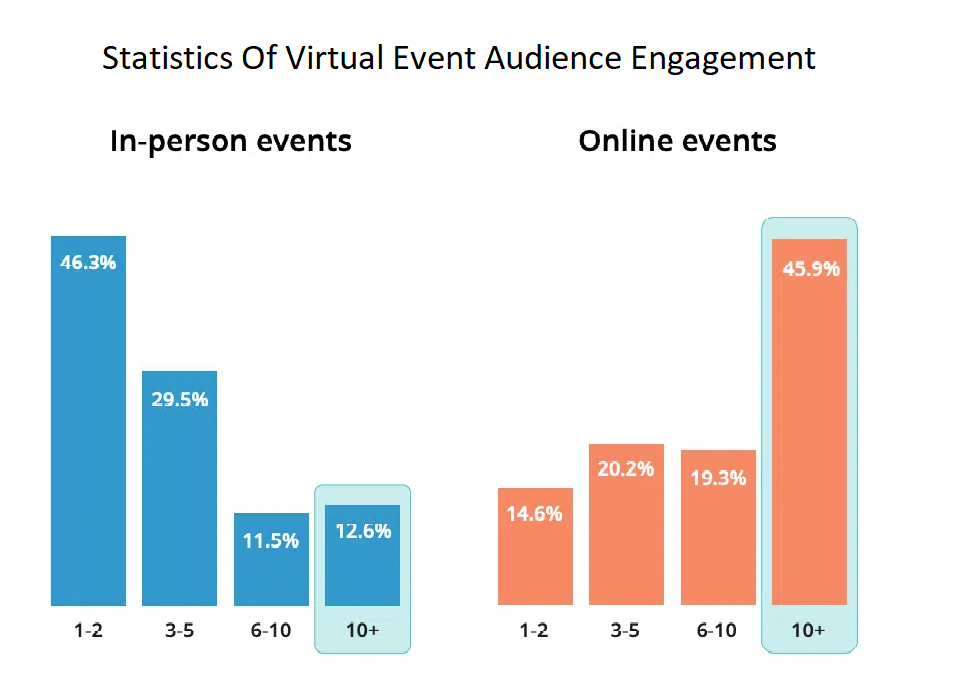 (Source: techreport.com)
(Source: techreport.com)
- Meeting professionals predict more guest rooms (59%) and meeting spaces (58%) will be available in 2024.
- 64% of consumers have positive feelings about brands they meet at live events.
- Nearly 77% say their trust in a brand increased after interacting with them at a live event.
- 72% of event organizers agree that in-person events are a vital part of their marketing strategy.
- Around 77.7% of attendees agree that these events provide great chances for networking.
- 55% of event professionals plan to host most of their events in person.
- 63% expect attendance numbers to return to pre-pandemic levels within the next one to two years.
Impact Of COVID-19 On Virtual Events Statistics
In March 2021, a survey showed different preferences for attending events after the COVID-19 pandemic in various countries:
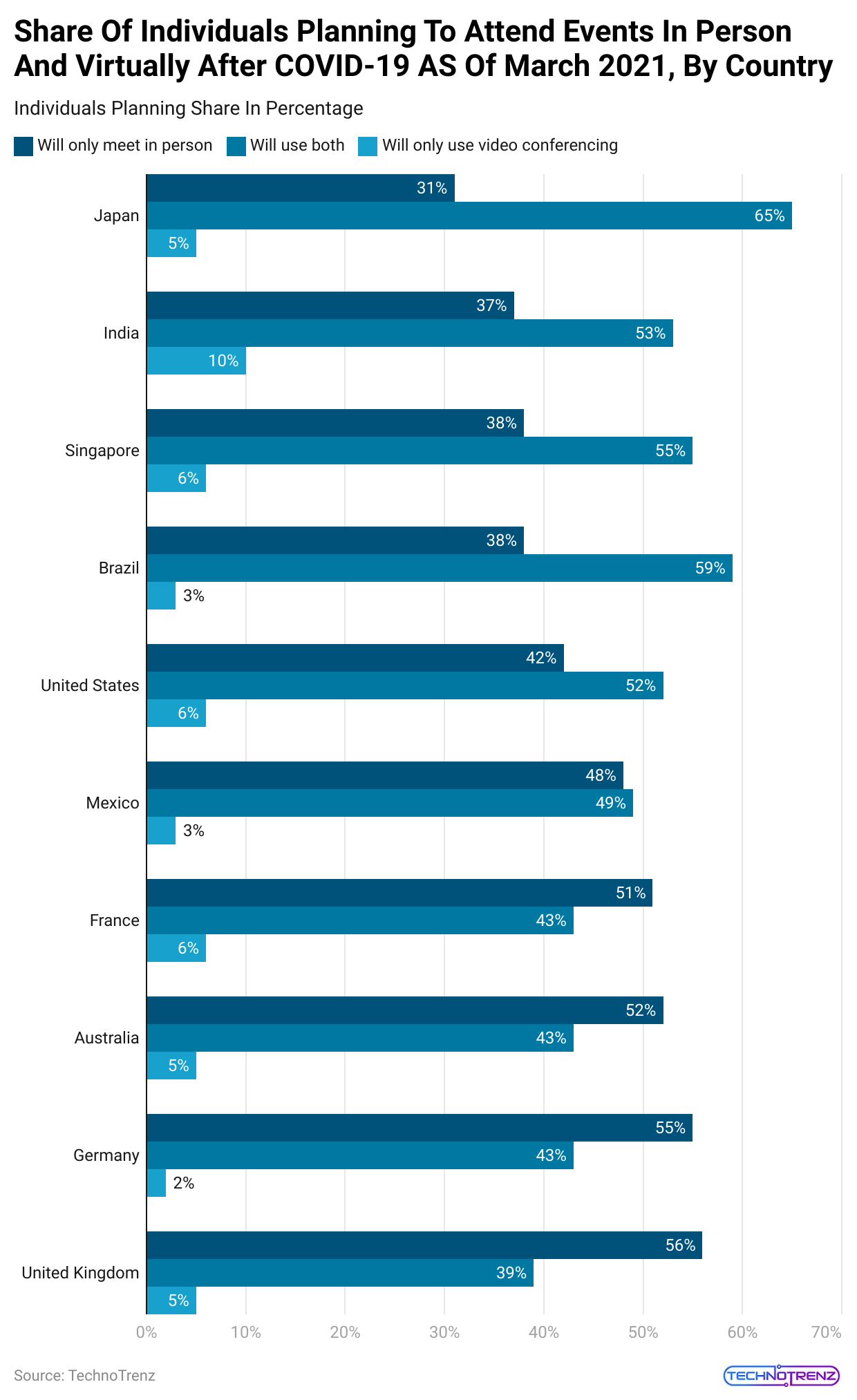 (Reference: scoop.market.us)
(Reference: scoop.market.us)
- United Kingdom: Most people, 56%, preferred only in-person meetings, while 39% liked a mix of in-person and virtual, and just 5% chose only video conferencing.
- Germany: Similar to the UK, 55% preferred in-person meetings, 43% favored both formats, and only 2% opted for video conferencing.
- Australia: 52% preferred in-person meetings and 43% supported hybrid meetings.
- France: 51% chose in-person, with 43% favoring a hybrid approach.
- United States: Here, only 42% liked in-person meetings, while a majority, 52%, were open to both methods and 6% preferred video conferencing.
- Brazil and Singapore: Both countries had the lowest preference for in-person meetings at 38% but were more accepting of hybrid formats at 59% and 55%, respectively.
- India: 37% preferred in-person meetings, but 53% were open to hybrid formats, and 10% chose only video conferencing—the highest among the surveyed countries.
- Japan: Only 31% preferred in-person meetings, but 65% liked hybrid formats, with 5% opting for video conferencing.
These differences reflect unique cultural and possibly infrastructure factors that influence how people approach virtual communication after the pandemic.
Virtual Event Benchmarks, Issues, And Success Statistics
- 9% of event planners switched from in-person events to virtual ones because of COVID-19 in 2020.
- A report found that 47% of events were canceled, 39.8% were postponed, and 74.9% were moved to online formats.
- On average, it takes 56 days to promote a virtual event.
- According to Virtual Event Statistics, 93% of event organizers plan to invest in virtual events in the future.
- 40% of event marketers think email marketing is the best way to promote virtual events.
- 59% of marketers say they would cancel an in-person event to make space for a virtual one if needed.
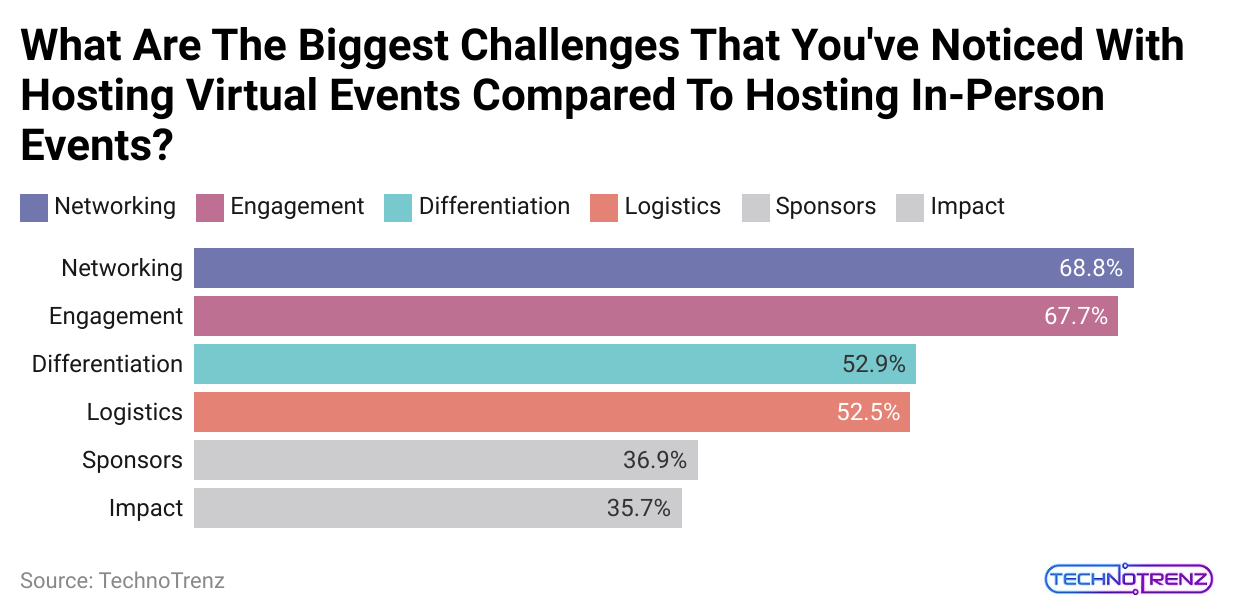 (Reference: bizzabo.com)
(Reference: bizzabo.com)
- However, 80% of B2B marketers say their website is the most effective marketing tool.
- A typical virtual event features about 20 speakers.
- 93% of surveyed marketers plan to shift from in-person to virtual events in 2023, but only 30% have written down their plans.
- Virtual Event Statistics stated that almost 80% of attendees join virtual events for educational purposes.
- Most small virtual events need 3-6 weeks to be successfully promoted, while 65% of marketers say larger events require over six weeks.
- 3% of event marketers believe virtual events are here to stay as people are becoming more accustomed to online experiences.
- 87% of marketers view the opportunities created by virtual events as a key success factor.
- Event organizers say the top three benefits of virtual events are more registrations, better engagement from attendees, and higher ROI.
- 68.8% of event marketers need help to create networking opportunities in virtual events.
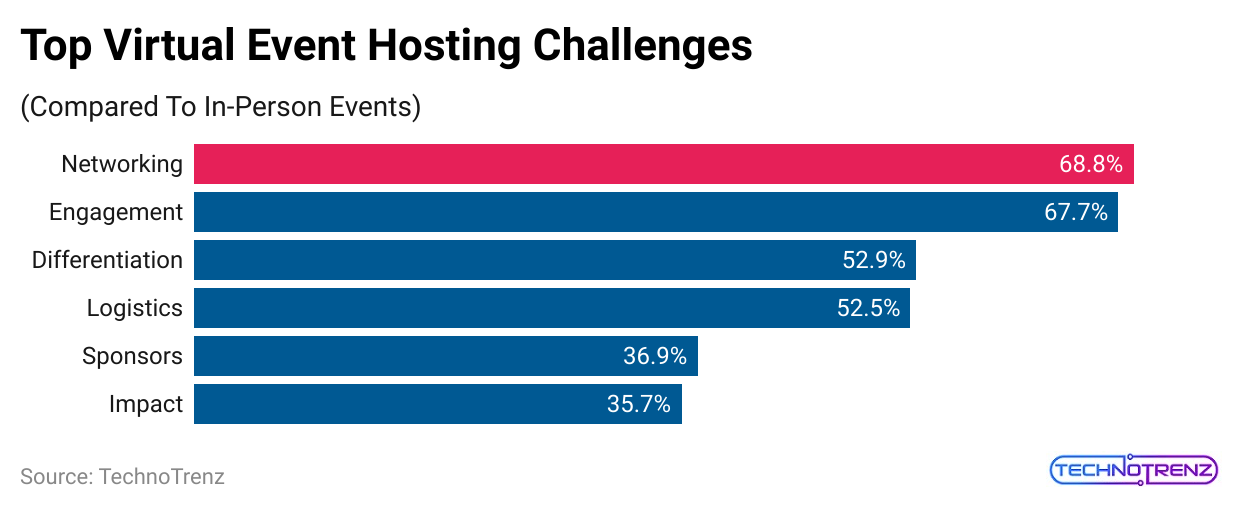 (Reference: 99firms.com)
(Reference: 99firms.com)
- 71% of organizers think closing deals is a sign of success.
- 85% of marketers believe that making attendees happy is essential for success.
- Nearly 43% of marketers find it challenging to adapt event formats for virtual settings.
- Almost 39.5% of event organizers find it easy to find great speakers for virtual events.
- Logistics problems affect 52.5% of event marketers when planning virtual events.
- Virtual Event Statistics stated that almost 91% of companies surveyed say their virtual events are successful.
- Roughly 54% of event planners focus on attendee experience rather than logistics.
- 38% of marketers face technical issues when hosting virtual events.
- Around 70% of event planners think good microphones are crucial for a successful virtual event.
- Almost 67% of businesses believe hybrid events are more beneficial.
- 7% of event marketers need help to keep attendees engaged, as per Virtual Event Statistics.
Event Sponsorship Statistics
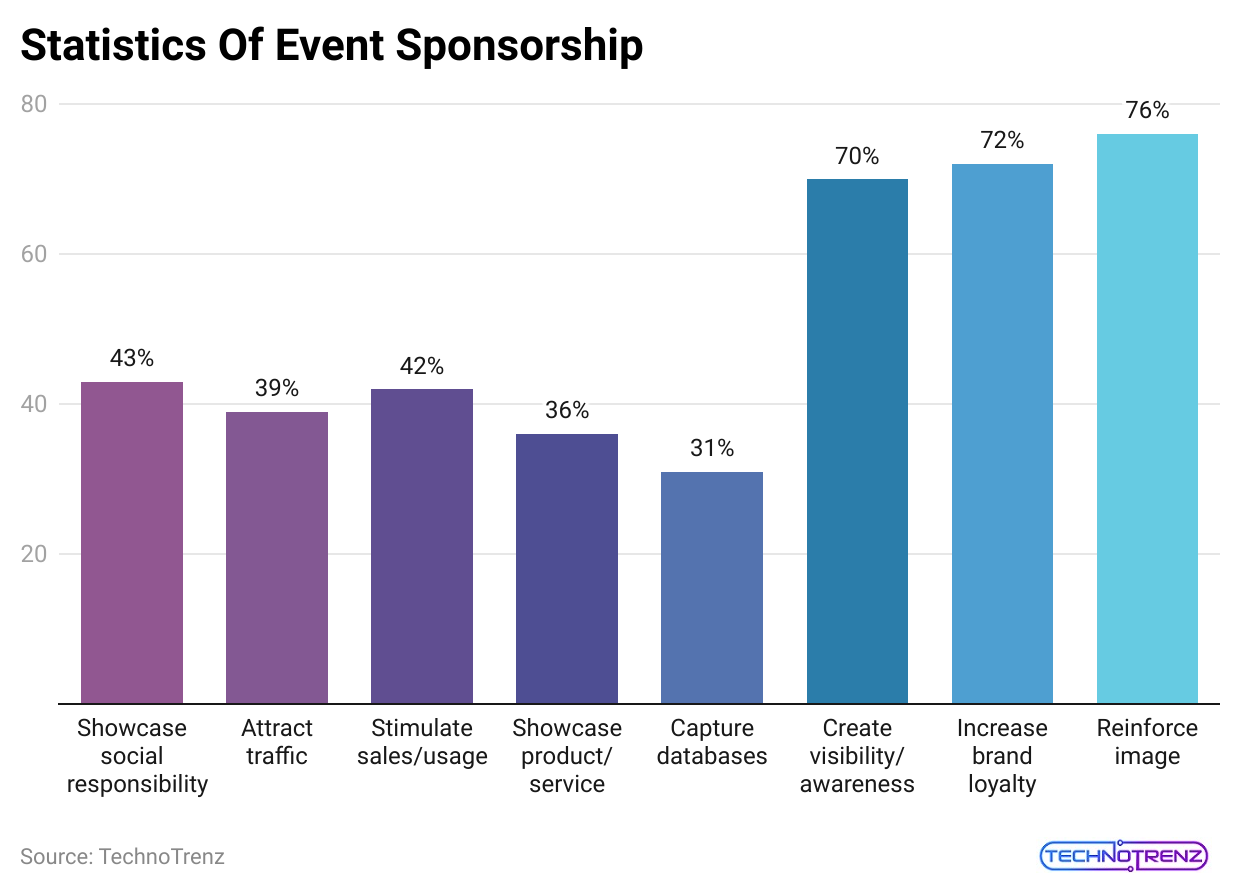 (Reference: techreport.com)
(Reference: techreport.com)
- $65.8 billion has been spent on sponsoring online events around the world. Many brands and individuals are interested in virtual gatherings, contributing to this large total, which is expected to grow in the future.
- About 50.6% of virtual event organizers say connecting sponsors with attendees is very important. They believe this connection encourages sponsors to invest more money to engage attendees.
- 7% of marketers report that the highest fees for events usually range from $500 to $1,000. They set these prices to cover their expenses or to make a profit.
- Around 62% of senior marketers plan to invest more money in live events. This indicates that marketing could improve as more marketers focus on live shows, increasing brand awareness and revenue.
- 40% of professionals in the US event industry intended to increase their spending on virtual events in 2021. The rapid growth of virtual events in 2020 encouraged many to make these investment plans for 2021, according to Virtual Event Statistics.
- Experts predict that the virtual event market will reach $22.75 billion by 2028. Research shows that the market is growing steadily and is on track to hit this number.
- Marketers worldwide predicted that about 40% of events would be digital in 2022, and records show that this goal was achieved.
Cost Saving And Attendee Engagement In Virtual Events Statistics
- Virtual events usually cost 75% less than in-person events.
- 74% of companies that moved to virtual events saw an increase in attendance.
- Virtual events can expand audience reach by 20-30%.
- They can cut carbon emissions by 99% compared to in-person events.
- Virtual Event Statistics stated that virtual events can generate 30% more leads.
- They can lower attendee acquisition costs by up to 75%.
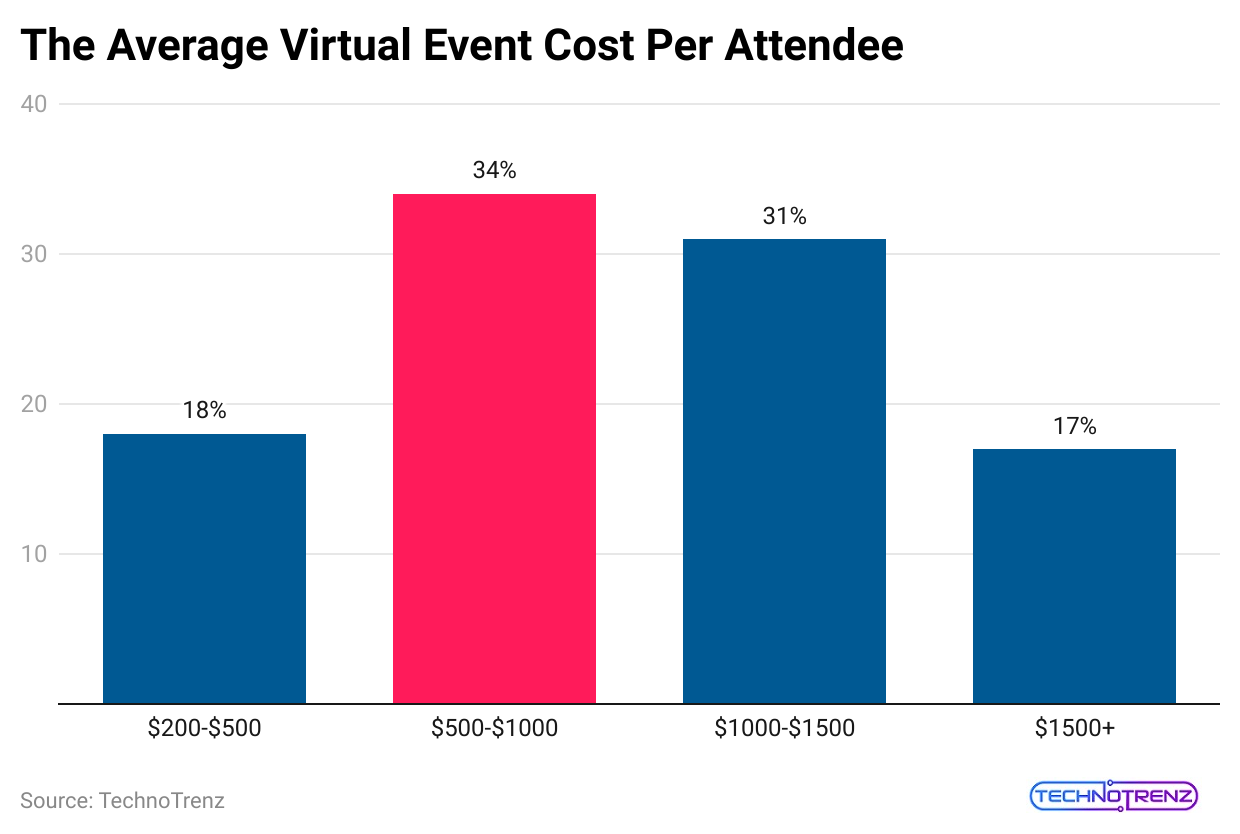 (Reference: 99firms.com)
(Reference: 99firms.com)
- Attendee satisfaction can improve by 20% with virtual events compared to in-person events.
- Attendees save an average of 58 minutes per event when attending virtually.
- Virtual events engage participants at a rate of about 60-70%.
- Attendees spend 27% more time at virtual events than at in-person events.
- Virtual events can achieve a lead conversion rate of up to 40%.
- 81% of organizations report higher returns on investment (ROI) from virtual events.
- 92% of attendees prefer to interact with product demos during virtual events.
- Companies save an average of $42,000 per event by going virtual.
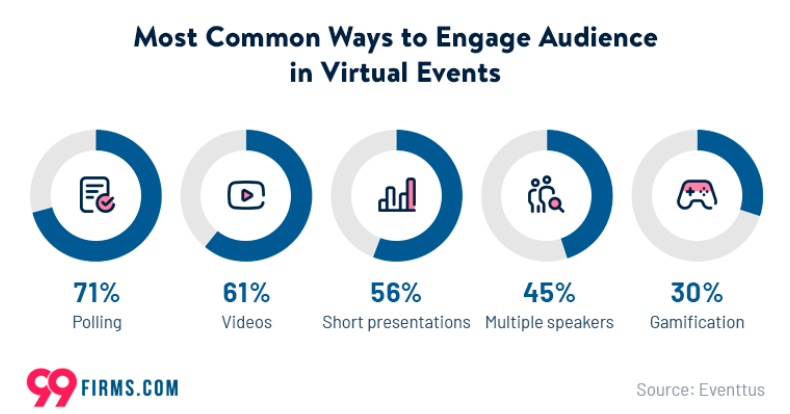 (Source: 99firms.com)
(Source: 99firms.com)
- Audience engagement for virtual events has increased by 172%.
- Virtual events have a 90% satisfaction rate among participants.
- Virtual events can save 60% in costs compared to live events.
- 76% of virtual event attendees take part in online activities.
- The average attendance rate for virtual events is 62%.
- Virtual events can boost attendee engagement by up to 80%.
- Year over year, virtual events have shown a 62% increase in leads generated.
- Registered participants have an average attendance rate of 59% at virtual events.
- Virtual events can provide a 12% higher ROI compared to in-person events.
Virtual And Hybrid Event Statistics
- During the pandemic, marketers quickly learned how to run events differently.
- 92% of event marketers plan to include virtual elements in their events.
- Virtual Event Statistics stated that almost 70% of event organizers believe hybrid events will be a lasting part of the industry.
- Nearly 49% of event professionals prefer a mix of in-person and virtual features for their events.
- 80% of event planners think hybrid events offer greater reach and engagement.
- Around 61% of event organizers find hybrid events more cost-effective than fully in-person ones.
- Hybrid events can boost attendee engagement by as much as 80%.
- They can increase event attendance by up to 50%.
- Roughly 45% of event attendees appreciate the flexibility of hybrid events.
- Hybrid events can lead to a revenue increase of up to 15% for organizers.
- Nearly 63% of event professionals feel hybrid events provide more networking opportunities.
- Hybrid events can reduce carbon emissions by up to 30% compared to traditional in-person events.
- Almost 75% of sponsors find hybrid events more effective for generating leads and raising brand awareness.
- Attendee satisfaction rates at hybrid events are typically around 85%.
- Hybrid events can increase content consumption by up to 60%.
- 55% of event professionals believe hybrid events offer a better return on investment (ROI) than fully virtual events.
- The biggest challenge for hybrid event marketers is making both physical and digital experiences equally good.
- 49% of marketers say this is a major issue.
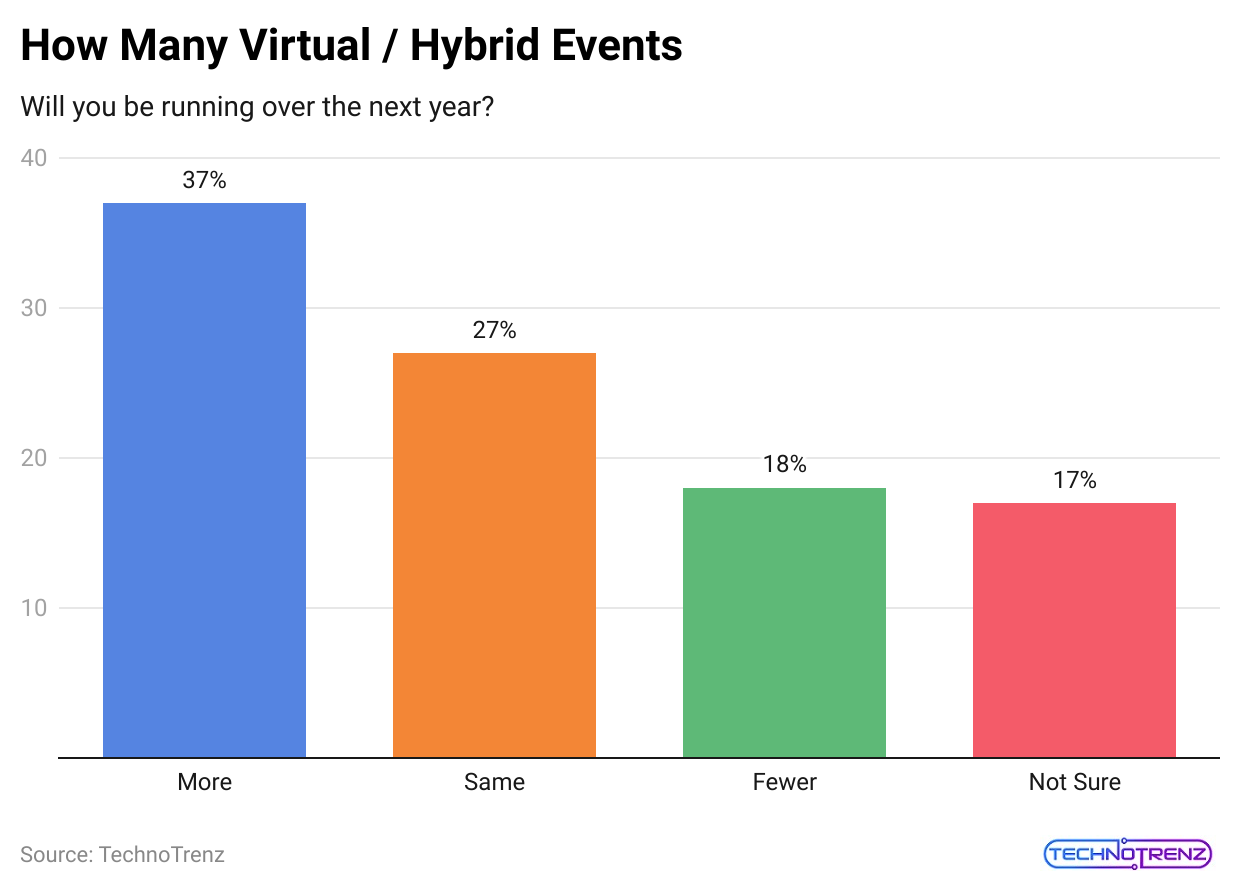 (Reference: eventindustrynews.com)
(Reference: eventindustrynews.com)
- Other challenges include handling hybrid logistics (42%), convincing attendees to show up in person (36%), encouraging in-person attendees to engage online (35%), and a general lack of knowledge about running hybrid events (31%).
- 75% of attendees say they will continue to join virtual and hybrid events even after in-person events return fully.
- Attendees generally feel positive about virtual events; 93% agree that companies have successfully adapted in-person meetings for online formats, and 73% are satisfied with their virtual experiences.
- Additionally, 84% prefer the option to attend events either in person or remotely.
- Nearly half of event marketers say they hold online events to increase engagement.
- When asked why they run virtual events, almost half (45%) say it’s to boost engagement, 19% say to build brand awareness, and 14% say to generate product sales.
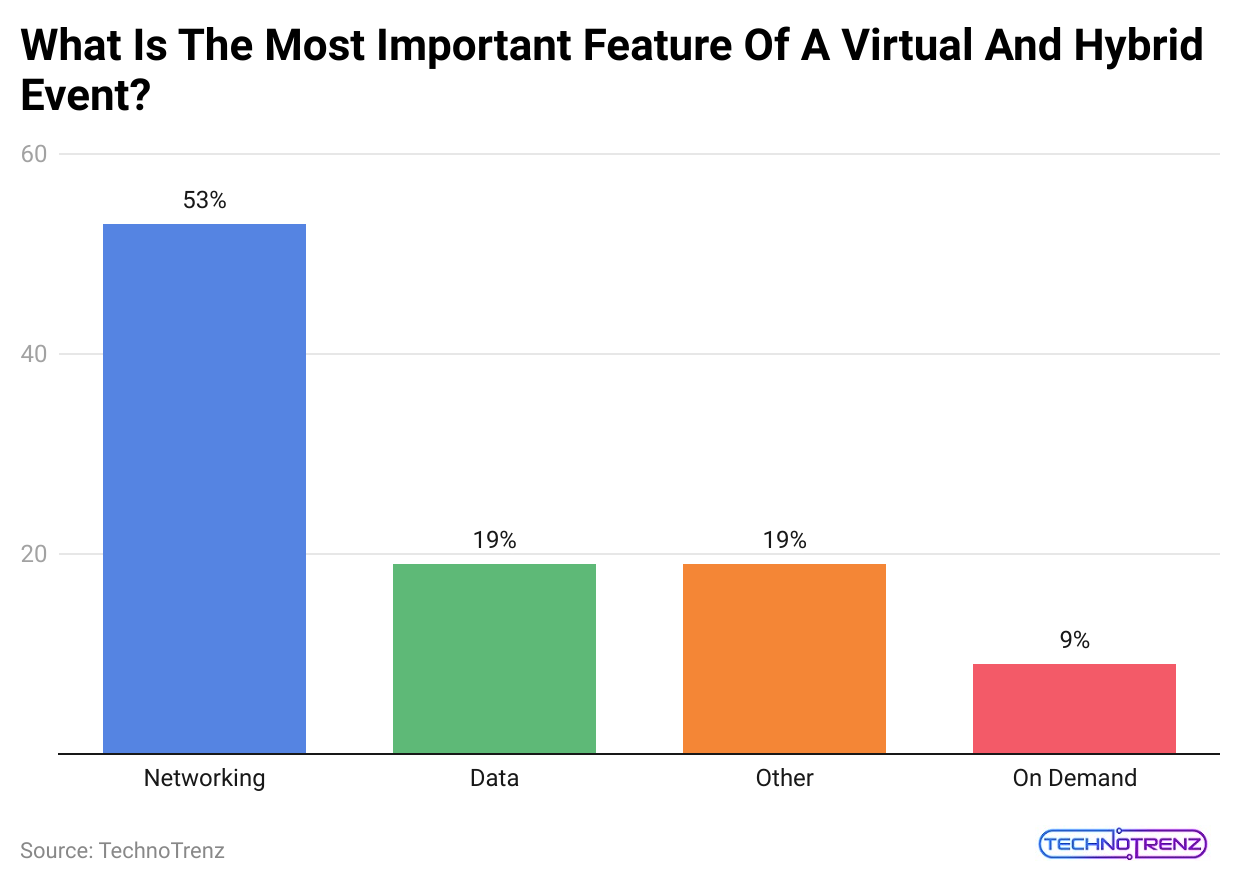 (Reference: eventindustrynews.com)
(Reference: eventindustrynews.com)
- Most event marketers conduct up to four virtual or hybrid events each month. According to a survey from AnyRoad:
#1. 8% run between 0-4 events
#2. 8% run between 5-10
#3. 9% run between 11-20
#4. 9% run 21 or more
- Almost half of virtual event marketers use engagement metrics to measure their event success.
- 9% look at attendee satisfaction, 14.8% consider revenue, and only 7.9% check social media engagements per Virtual Event Statistics.
- More than 90% of event marketers believe their virtual and hybrid events have been successful.
- When evaluating their performance, 33.9% say they are very successful, 58.2% say they are somewhat successful, and only 1.6% feel unsuccessful with virtual events.
Event Technology Statistics
Event technology has changed how events are planned, run, and experienced, which is crucial for the industry’s growth. New tools like event management software, mobile apps, and virtual reality have made organizing events easier and improved attendee engagement.
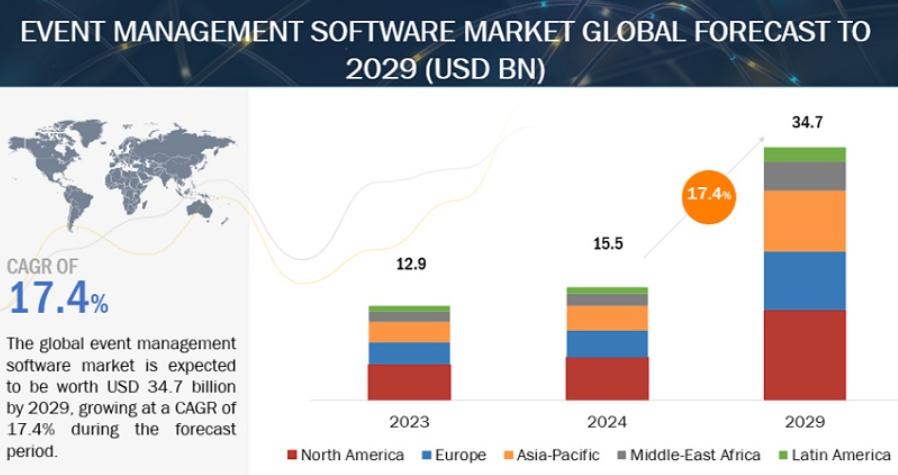 (Source: marketsandmarkets.com)
(Source: marketsandmarkets.com)
- 40% of developers report that over 80% of people are using apps, while 35% see usage rates between 60% and 80%.
- The main challenges with event technology are engagement, cost, and integration.
- 6% of event planners improved their tech skills during the pandemic.
- Virtual Event Statistics stated that almost 78% of event planners have increased their use of technology since the pandemic.
- The market for event management software was valued at $5.6 billion in 2019 and is expected to reach $18.4 billion by 2029, growing at an annual rate of 12.9%.
- About 67.4% of organizers are thinking about or planning to switch event software vendors within the next year.
- Around 72.5% of organizers believe their event platform has significantly helped achieve positive results at recent conferences.
- 9% of attendees now expect to see advanced technology, like smart badges, at in-person conferences.
- 5% of professionals are willing to spend up to $5,000 for new virtual event technology.
- While 51% of event decision-makers are happy with their virtual event platform, 94% have encountered issues with platform setup.
- Almost 59.4% of event marketers are looking for software that can manage both in-person and virtual events.
- Nearly 67.5% of attendees consider a mobile event app essential for events.
- 98% of event professionals use features like agendas and session schedules in their event apps.
- In the tech industry, 97% of marketers use agenda features in their event apps.
Adoption Rates of Virtual Events By Organizations
- 93% of event marketers plan to put money into virtual events in the future.
- 80% of companies want to add virtual events to their marketing strategies moving forward.
- Nearly 59% of event marketers believe virtual events are just as effective as in-person events.
- Around 79% of companies think virtual events are an important part of their long-term plans, as per Virtual Event Statistics
- Almost 83% of sponsors intend to take part in virtual event sponsorships in the future.
- 62% of virtual event attendees have a Bachelor’s degree or higher.
- Roughly 89% of businesses feel virtual events will always be part of the events industry.
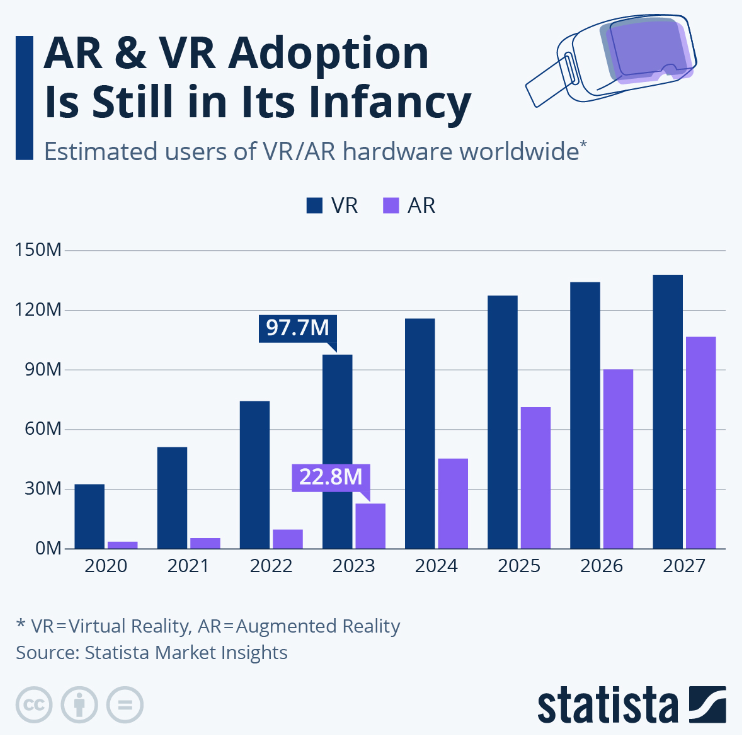 (Source: statista.com)
(Source: statista.com)
- 81% of event organizers believe hybrid events are the future of the industry.
- Virtual event platforms saw a massive 1,800% increase in use in 2020.
- In fact, according to Virtual Event Statistics, 68% of event organizers think hybrid events are the way forward.
- 89% of event planners believe virtual events will continue to be important in the industry.
- According to Virtual Events Statistics, almost 88% of businesses plan to include virtual elements in their in-person events in the future.
- The most popular day for virtual events is Tuesday, with 24.3% of events happening that day.
- 90% of event organizers are likely to add virtual features to their future in-person events.
- Almost 78% of companies plan to spend the same or more on virtual events next year.
- Nearly 65% of event organizers believe hybrid events will become the new standard after the pandemic.
- 68% of companies see virtual events as an effective way to generate leads.
- Around 72% of organizations think virtual events are crucial for their marketing plans.
- 93% of event organizers believe virtual events are here to stay, as stated in Virtual Event Statistics.
- The most common type of virtual event is webinars, which make up 63% of all virtual events.
- 77% of virtual events include interactive features to engage attendees.
- 79% of virtual event organizers plan to use virtual reality to enhance attendee experiences.
- 62% of companies have switched to virtual events as their main method of event marketing.
Benefits Of Virtual Events Statistics
- Virtual events can lower carbon emissions by up to 98% compared to in-person events.
- Virtual events can cost 75% less than physical events.
- 59% of event organizers believe virtual events are easier for a global audience to access.
- Virtual events can increase attendance by 30% compared to in-person events.
- Virtual events can boost lead generation by 60% compared to physical events.
- Virtual events can cut travel and accommodation costs by 20%, as per Virtual Event Statistics.
- Virtual events can save 50% of the time needed for planning and organizing.
- Virtual events can provide a 2.8 times higher return on investment (ROI) than physical events.
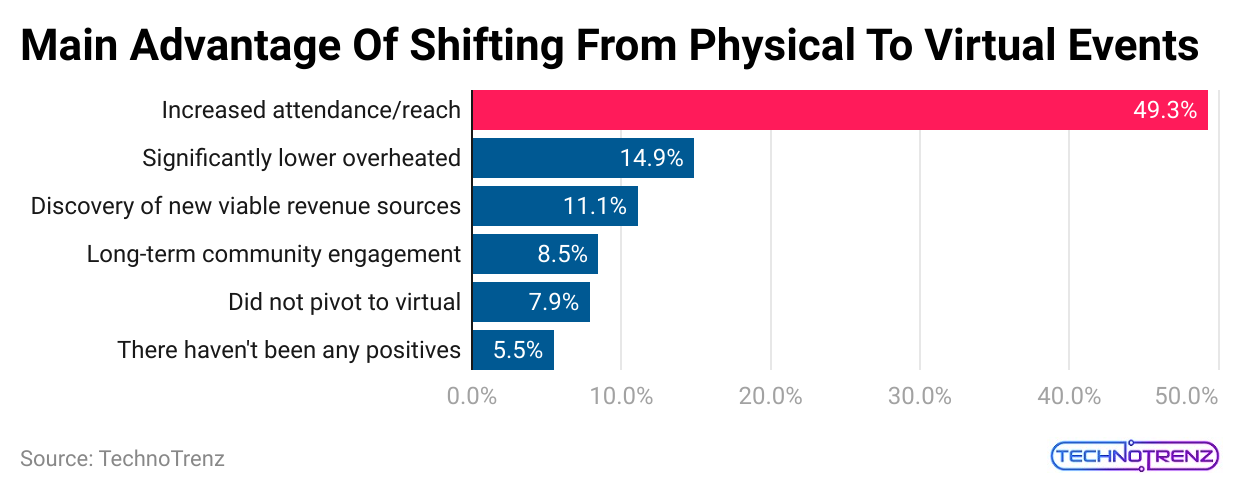 (Reference: 99firms.com)
(Reference: 99firms.com)
- Virtual events can lead to a 12% increase in revenue per attendee compared to physical events.
- Virtual events can reduce the carbon footprint by 90% compared to in-person events.
- Virtual events can increase audience engagement by 20% compared to physical events.
- Virtual events can save up to 80% on production costs.
- Virtual Event Statistics stated that virtual events could improve sponsor satisfaction by 25% compared to physical events.
- 77% of event organizers believe virtual events offer better chances for data collection and analysis.
- Virtual events can raise attendee satisfaction by 15% compared to physical events.
- 53% of attendees are willing to spend more time at a virtual event than at a physical one.
- Virtual events can shorten lead times by up to 60% compared to physical events.
- 68% of event organizers think virtual events improve attendee engagement and interaction.
- Virtual events have a 2.6 times higher conversion rate than physical events.
- Virtual events can reduce planning timelines by up to 50%.
- Virtual Event Statistics stated that virtual events can improve attendee retention rates by 25%.
- 44% of attendees prefer virtual events for their convenience and flexibility.
- Virtual events can lower overall event costs by 35%.
- 76% of marketers believe virtual events are an effective way to generate leads.
- Virtual events can raise attendee satisfaction ratings by 28%.
- 61% of event organizers say virtual events allow for better data collection opportunities.
- Virtual events can reduce production costs by up to 75%.
- Virtual events can lead to a 22% increase in attendee satisfaction rates.
- The average conversion rate for virtual events is 63%, compared to 40% for in-person events.
- Virtual events can increase session attendance rates by 30%, as per Virtual Event Statistics.
- 74% of event organizers say virtual events allow for better personalization for attendees.
- Virtual events can cut setup and breakdown time by 45%.
- Virtual events can lower marketing costs by up to 50%.
- 80% of event marketers believe virtual events can provide a better ROI than physical events.
- The average satisfaction rating for virtual events is 87%.
B2B Event Industry Statistics
In B2B marketing, sharing knowledge is very important for planning and attending events and conferences. Here are some key statistics about the B2B event industry:
- A recent study by Research Dive predicts that the global event industry will make $1,457.2 million by 2028, growing at an annual rate of 23.1% from 2021 to 2028.
- 90% of B2B event organizers say their biggest challenges are reaching new audiences and finding sponsors.
- The study also says that corporate events and seminars will be the most profitable, with an expected revenue of $413.7 million.
- Virtual Event Statistics states that the Asia Pacific region is growing the fastest in the virtual events industry, with an annual growth rate of 13.3%.
- 54% of B2B event marketers plan to host more events this year and in the future.
- The sponsorship segment of the B2B event industry is expected to grow the fastest, at a rate of 12.1% from 2021 to 2028.
- According to Virtual Events Statistics, 45% of future B2B events will be fully virtual.
Virtual Event Platform And Features Usage Statistics
- 76% of marketers believe that email is the best way to encourage event registrations.
- This is followed by social media (60%), paid online ads (51%), and B2B partnerships (51%).
- 45% of event organizers use polls, social media walls, and games to keep virtual attendees engaged. 30% even provided food and drinks to maintain interest
- More than 80% of virtual event organizers found that using polls increased audience interaction during the event.
- When virtual events sent email reminders and push notifications one day and one hour before the event, attendance increased by 83%.
- 87% of organizers prefer virtual event platforms that offer sponsorship options in their online booths.
- It is recommended to limit the number of LIVE cameras on screen to 5.
- This makes it easier to manage sound and keep focus on the speaker and presentations, especially on smaller screens.
- 30% of businesses use an event app for their virtual events.
- 91% of event organizers allow sponsorship for virtual sessions to increase revenue.
- Organizers have seen a 320% increase in event analytics for reviewing results and measuring ROI.
- Only 10% of virtual event platforms offer live streaming from a mobile app.
Webinar Statistics
- 98% of marketers plan to improve their webinars with AI in the next year.
- Many organizations are new to webinars; 33.4% have been doing them for only two to three years.
- Virtual events 25% of organizations hold 50 or more webinars each year, while others host 20 or fewer.
- The average cost for each lead from a webinar is $72, as stated in Virtual Event Statistics.
- Almost half (41.7%) of organizations have increased how often they hold webinars this year.
- 31% of marketers say that keeping participants engaged is their biggest challenge with webinars.
- 41% of marketers want to improve networking and engagement in their webinars.
- Nearly 60% of webinars are created to support the entire customer journey.
- Wednesdays are the best day for B2B webinars, with an average of 330 registrants and a 14% increase in attendance.
- Nearly half (49%) of marketers use engagement data to refine their marketing strategies, while only 20% use it for scoring leads.
- Virtual Event Statistics stated that almost 51% of content marketers say webinars have produced the best results in the last year.
- 66% of organizations use webinars to educate customers, with 60% focusing on generating leads.
- 65% of marketers reuse webinar content, which saves time and money while helping to grow their audience.
- One respondent noted that working from home and hosting more webinars led to a 10x increase in their audience reach compared to live events.
- For 24% of marketers, webinars are their most important tool and play a key role in their strategy.
- Over 70% of marketers plan to spend more on webinars in the future.
- The virtual events industry is expected to reach about $103 trillion by 2032, growing at about 14% each year from 2023 to 2032.
- Polls during webinars usually have a conversion rate between 50% and 55%, with top performers reaching 60% to 65%, according to Virtual Event Statistics.
- Webinars held during business hours get a much better response rate, averaging 50% to 55%, compared to 25% to 30% outside of those hours.
- The average click-through rate (CTR) for webinar offers is around 15% to 20%, but top performers can achieve 25% to 30%.
- Live webinars generate 89% of leads, while only 11% come from on-demand options.
- Tuesdays, Wednesdays, and Thursdays usually see higher conversion rates from polls and downloads.
- Webinars attract an average of 284 sign-ups, with a 57.9% attendance rate.
Conclusion
In conclusion, virtual events have become essential for communication and engagement, especially due to the COVID-19 pandemic. They offer benefits like easy access, lower costs, and the ability to reach a global audience, enabling meaningful interactions and knowledge sharing through formats such as webinars and conferences.
While there are still challenges, such as keeping attendees engaged and handling technical issues, ongoing improvements in technology are helping to improve these events. Virtual events remain important for organizations that want to connect with their audiences, adapt to changes, and achieve their goals in an increasingly connected world.
Sources
FAQ.
The global virtual events market was worth $114.12 billion in 2019. It is projected to increase from $138.54 billion in 2023 to $793.5 billion by 2031, or 21.4% each year from 2024 to 2031.
A virtual event, also known as an online event, virtual conference, or livestream experience, is an event where people connect and interact online instead of meeting in person.

After graduating in Electrical Engineering, Maitrayee moved into writing after working in various technical roles. She specializes in technology and Artificial Intelligence and has worked as an Academic Research Analyst and Freelance Writer, focusing on education and healthcare in Australia. Writing and painting have been her passions since childhood, which led her to become a full-time writer. Maitrayee also runs a cooking YouTube channel.




